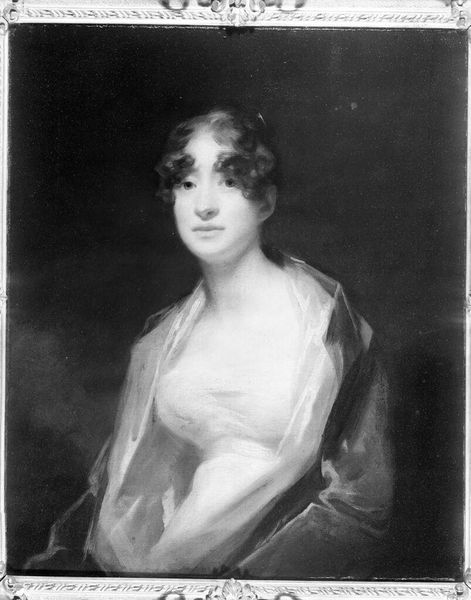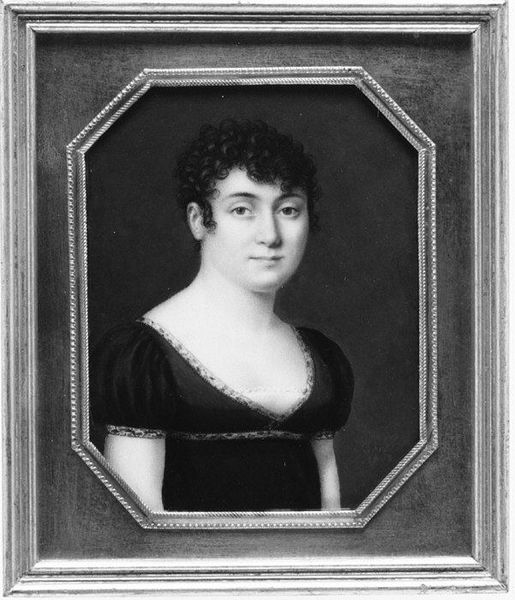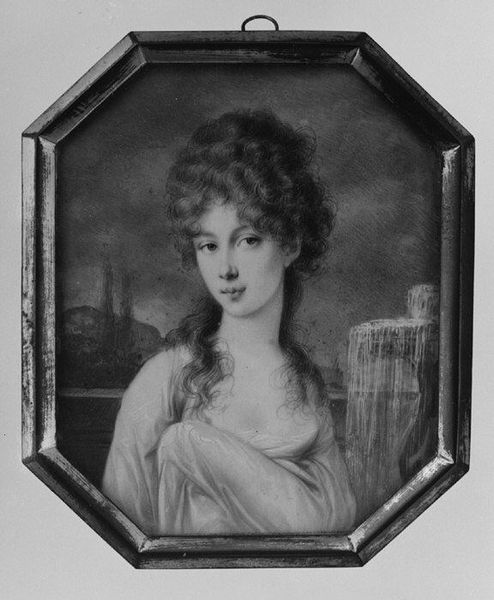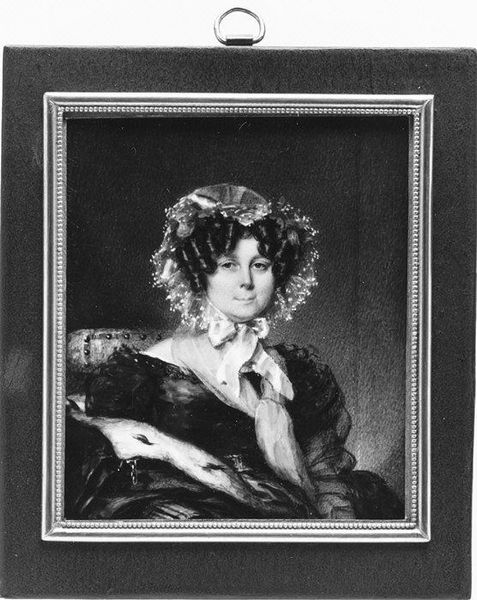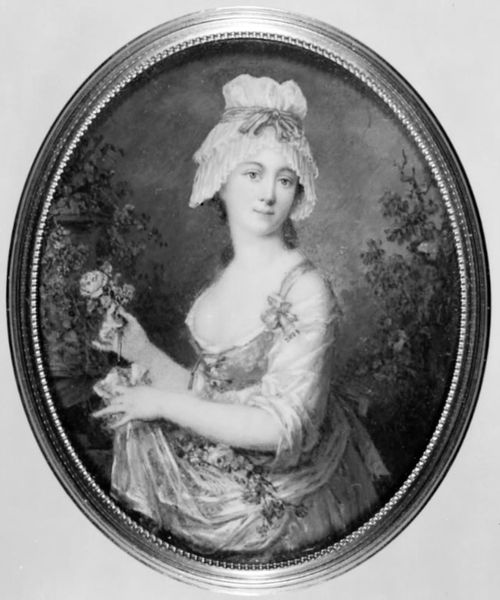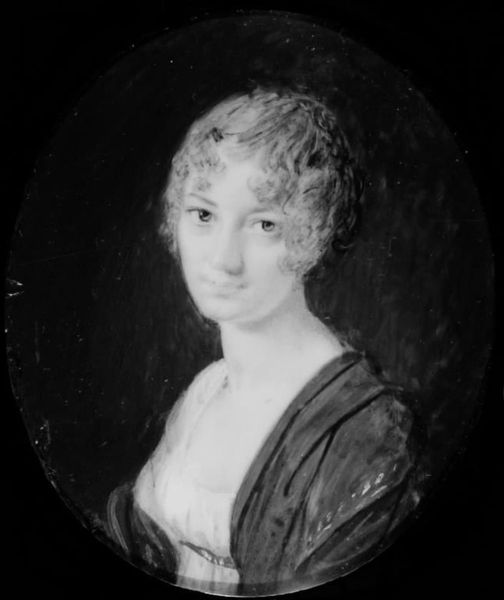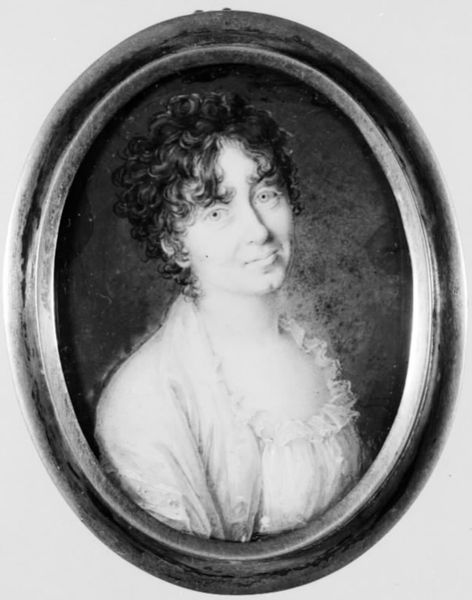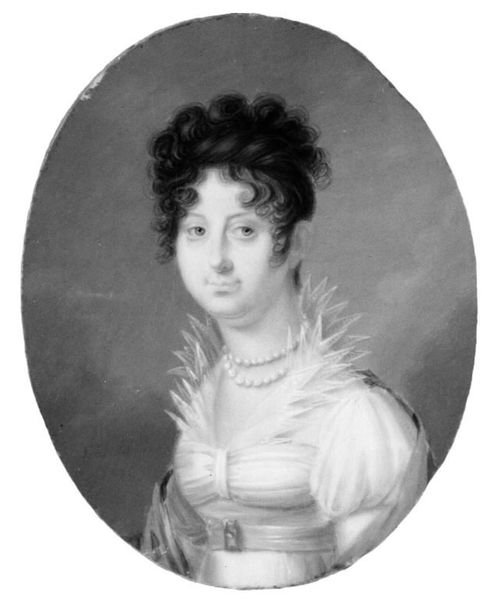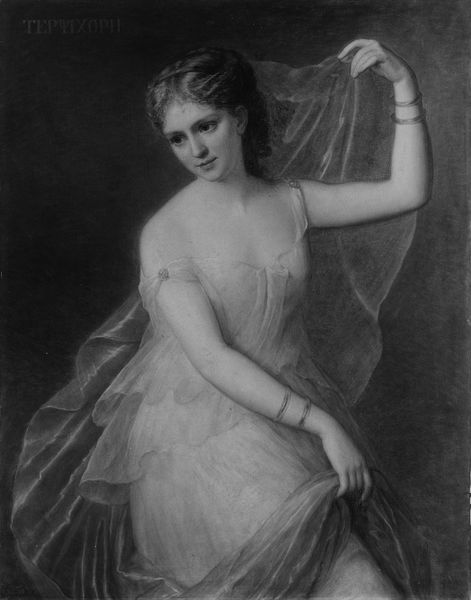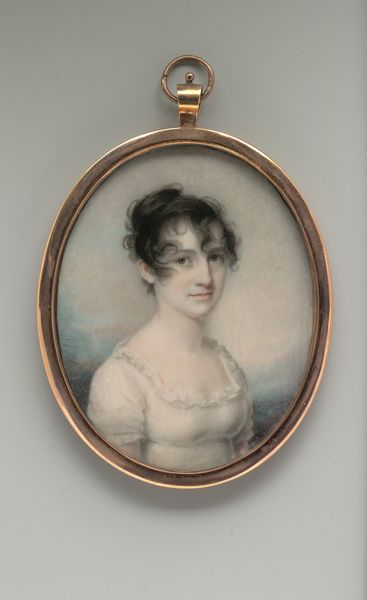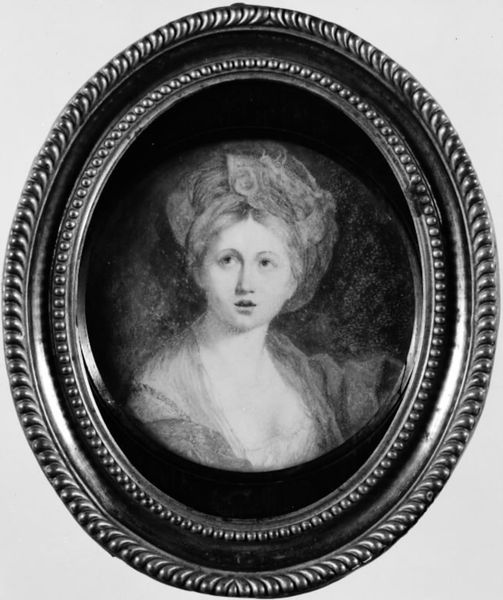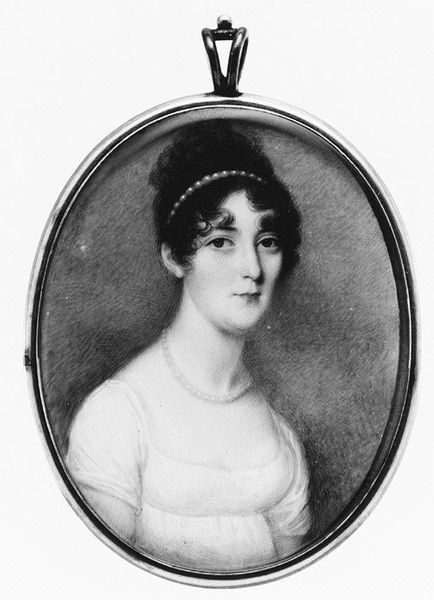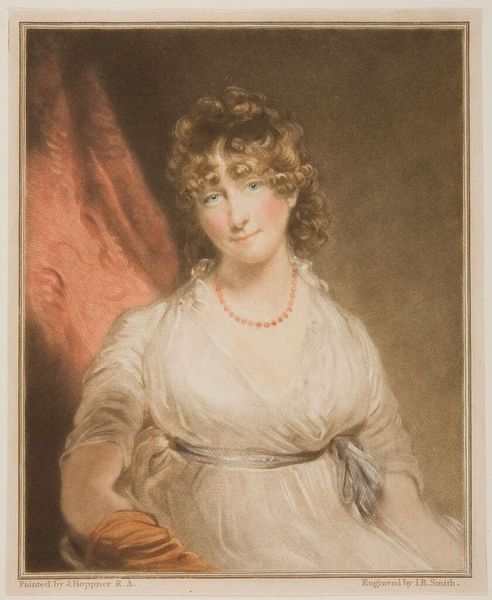
painting
#
portrait
#
painting
#
romanticism
#
academic-art
#
miniature
Dimensions: 2 1/2 x 2 1/4 in. (64 x 55 mm)
Copyright: Public Domain
Curator: Here we have Jacques Delaplace’s "Portrait of a Woman," created sometime between 1805 and 1810. The work, now held at the Metropolitan Museum, offers a striking image from the Romantic era. Editor: My first impression is of a cool, restrained elegance. She looks pensive, perhaps even melancholic, in her neoclassical garb, and clutching a rose. There's an almost dreamlike quality. Curator: It's important to recognize how portrait miniatures like this circulated within the intimate social spheres of the time. Consider the identity and potential audience this painting was made for. How did such artworks contribute to gendered perceptions of beauty, virtue, and class within that historical framework? Editor: Absolutely, these miniatures acted as both personal keepsakes and public pronouncements. Her pose, the delicate fabrics, all suggest a carefully constructed image of femininity. I think there’s a subversive potential, though; we need to consider how women navigated and, perhaps, challenged those constraints. The rose, could that symbolize romantic love, but also the transient nature of beauty, or even feminine resistance to patriarchal expectations? Curator: Fascinating, particularly how we might read the rose outside conventional symbolism! Considering the era and Delaplace’s social positioning, it’s more probable this conforms with accepted artistic conventions of the time, showing us how a successful artist made his career during France’s Imperial era. I also think its later reception shaped its overall meaning. Who owned it? How was it displayed and discussed over time? All this affected its meaning. Editor: But those meanings aren't static; later receptions and readings challenge previous understandings. And while the conventions and power structures that the work conformed to are an interesting point, they also act as an insight into the gender norms and restrictions of that era, from which modern society developed. I agree we can’t ignore the history, yet isn't there room to question? Curator: Definitely a multifaceted view. It allows a richer and more textured appreciation of both the artist's achievement, the sitter, and the ongoing discourse about representation. Editor: Indeed, art provides a space for engaging with history, critically reassessing dominant narratives, and challenging contemporary power structures that echo into modernity.
Comments
No comments
Be the first to comment and join the conversation on the ultimate creative platform.
